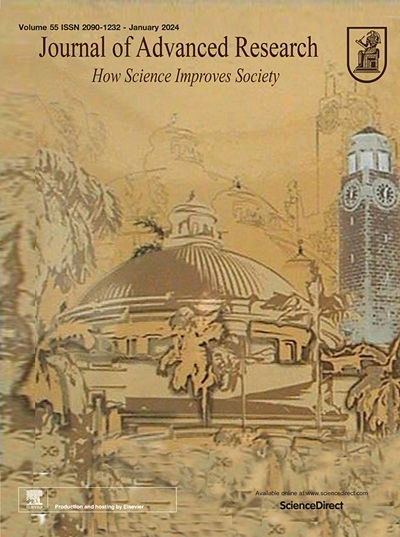人类牙龈单细胞图谱揭示了与 NET 相关的中性粒细胞亚群对牙周免疫的调节作用。
IF 11.4
1区 综合性期刊
Q1 MULTIDISCIPLINARY SCIENCES
引用次数: 0
摘要
导言:中性粒细胞的过度募集和活化是牙周炎病理改变的主要特征,其中中性粒细胞胞外陷阱(NETs)被认为是牙周炎性病变的罪魁祸首。尽管NETs在牙周炎的发生和发展中起着关键作用,但其具体功能和机制仍不清楚:证明NETs参与牙周免疫病理的重要功能和具体机制:我们对健康人和牙周炎患者的牙龈组织进行了单细胞 RNA 测序。方法:我们对健康人和牙周炎患者的牙龈组织进行了单细胞 RNA 测序,然后应用高维加权基因共表达网络分析和伪时间分析法来描述中性粒细胞的异质性。用抑制中性粒细胞的药物治疗牙周炎动物模型,以研究中性粒细胞对严重牙周炎的影响。此外,我们还利用六种机器学习方法建立了基于NETs相关基因的牙周炎预测模型。细胞-细胞通讯分析用于识别免疫微环境中主要细胞群之间的配体-受体对:结果:我们构建了牙周微环境的单细胞图谱,并获得了九种主要细胞群。我们还在中性粒细胞中发现了一个与 NET 相关的亚群(NrNeu)。体内抑制实验证实,NETs 参与了严重牙周炎的牙龈炎症浸润和牙槽骨吸收。我们进一步筛选了三个与NETs相关的关键基因(PTGS2、MME和SLC2A3),证实它们具有预测牙周炎的潜力。此外,我们的研究结果表明,牙龈成纤维细胞与 NrNeu 的相互作用最多,它们可能通过 MIF-CD74/CXCR4 轴促进牙周炎中 NETs 的产生:本研究强调了NETs在牙周免疫中的致病作用,阐明了牙龈成纤维细胞激活NETs的特定调控关系,为牙周炎的临床诊断和治疗提供了新的思路。本文章由计算机程序翻译,如有差异,请以英文原文为准。

Single-cell atlas of human gingiva unveils a NETs-related neutrophil subpopulation regulating periodontal immunity
Introduction
Exaggerated neutrophil recruitment and activation are the major features of pathological alterations in periodontitis, in which neutrophil extracellular traps (NETs) are considered to be responsible for inflammatory periodontal lesions. Despite the critical role of NETs in the development and progression of periodontitis, their specific functions and mechanisms remain unclear.
Objectives
To demonstrate the important functions and specific mechanisms of NETs involved in periodontal immunopathology.
Methods
We performed single-cell RNA sequencing on gingival tissues from both healthy individuals and patients diagnosed with periodontitis. High-dimensional weighted gene co-expression network analysis and pseudotime analysis were then applied to characterize the heterogeneity of neutrophils. Animal models of periodontitis were treated with NETs inhibitors to investigate the effects of NETs in severe periodontitis. Additionally, we established a periodontitis prediction model based on NETs-related genes using six types of machine learning methods. Cell-cell communication analysis was used to identify ligand-receptor pairs among the major cell groups within the immune microenvironment.
Results
We constructed a single-cell atlas of the periodontal microenvironment and obtained nine major cell populations. We further identified a NETs-related subgroup (NrNeu) in neutrophils. An in vivo inhibition experiment confirmed the involvement of NETs in gingival inflammatory infiltration and alveolar bone absorption in severe periodontitis. We further screened three key NETs-related genes (PTGS2, MME and SLC2A3) and verified that they have the potential to predict periodontitis. Moreover, our findings revealed that gingival fibroblasts had the most interactions with NrNeu and that they might facilitate the production of NETs through the MIF-CD74/CXCR4 axis in periodontitis.
Conclusion
This study highlights the pathogenic role of NETs in periodontal immunity and elucidates the specific regulatory relationship by which gingival fibroblasts activate NETs, which provides new insights into the clinical diagnosis and treatment of periodontitis.
求助全文
通过发布文献求助,成功后即可免费获取论文全文。
去求助
来源期刊

Journal of Advanced Research
Multidisciplinary-Multidisciplinary
CiteScore
21.60
自引率
0.90%
发文量
280
审稿时长
12 weeks
期刊介绍:
Journal of Advanced Research (J. Adv. Res.) is an applied/natural sciences, peer-reviewed journal that focuses on interdisciplinary research. The journal aims to contribute to applied research and knowledge worldwide through the publication of original and high-quality research articles in the fields of Medicine, Pharmaceutical Sciences, Dentistry, Physical Therapy, Veterinary Medicine, and Basic and Biological Sciences.
The following abstracting and indexing services cover the Journal of Advanced Research: PubMed/Medline, Essential Science Indicators, Web of Science, Scopus, PubMed Central, PubMed, Science Citation Index Expanded, Directory of Open Access Journals (DOAJ), and INSPEC.
 求助内容:
求助内容: 应助结果提醒方式:
应助结果提醒方式:


